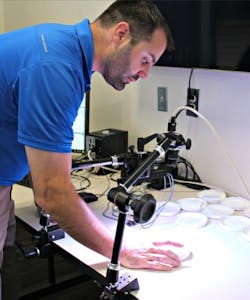Machine vision system applications came to the forefront across manufacturing industries in the 1990s, with numerous technology suppliers entering the market. Even though the cost of these systems dropped dramatically in the 1990s compared to the 1980s, the technology was still seen as costly and, in some cases, complex enough to only find wide application for critical inspection use in regulated industries.
Like most chip-based technologies, the cost and complexity of machine vision systems continued to come down to the point where the costs are no longer prohibitive and the learning curve is not as steep as it once was. Despite this reduction in machine vision cost and complexity, and its resultant exploding use across industry, many manufacturers are still not highly familiar with the technology, or the fact that it is now far more affordable and easy to use.
To help educate manufacturers about modern machine vision technology, MartinCSI—a Midwest-based industrial control system integrator and provider of industrial controls, motion, safety and robotics—has partnered with Omron to launch a dedicated vision lab to conduct proof-of-concept work as well as testing and validation services. MartinCSI sees the addition of this lab as being especially important to its business and its customers, since the integrator has been widely recognized for its work designing and building vision systems for challenging applications and environments. Now customers can see firsthand how MartinCSI engineers design and build vision solutions for real-world applications.
“The vision lab allows customers to view pass/fail tests, barcode matching, data collection, part presence and absence as well as inspection and measurements on their own products,” says Jim Sellitto, vice president of business development for MartinCSI.
Omron’s FH and FZ5 vision systems, its FQ2 smart camera, as well as the company’s portfolio of lenses, lighting and mounting options and vision algorithms are showcased in the lab to demonstrate how they can be used to address a customer’s unique specifications.
Scott Harvey, account manager for Omron, says that since the vision lab opened in 2015, the MartinCSI team has used the vision technologies shown in the lab to “tackle applications from the inspection of packaging for food and beverage companies to identifying spotted paint and stain variations or defects.”
“By collecting data from vision inspection, companies can identify and fix inconsistencies early in the production process,” says Sellitto. “The bottom line is that vision inspection is now used in virtually all manufacturing industries to boost product integrity, increase production efficiency, meet regulatory compliance and protect a brand’s reputation.”
Leaders relevant to this article:


